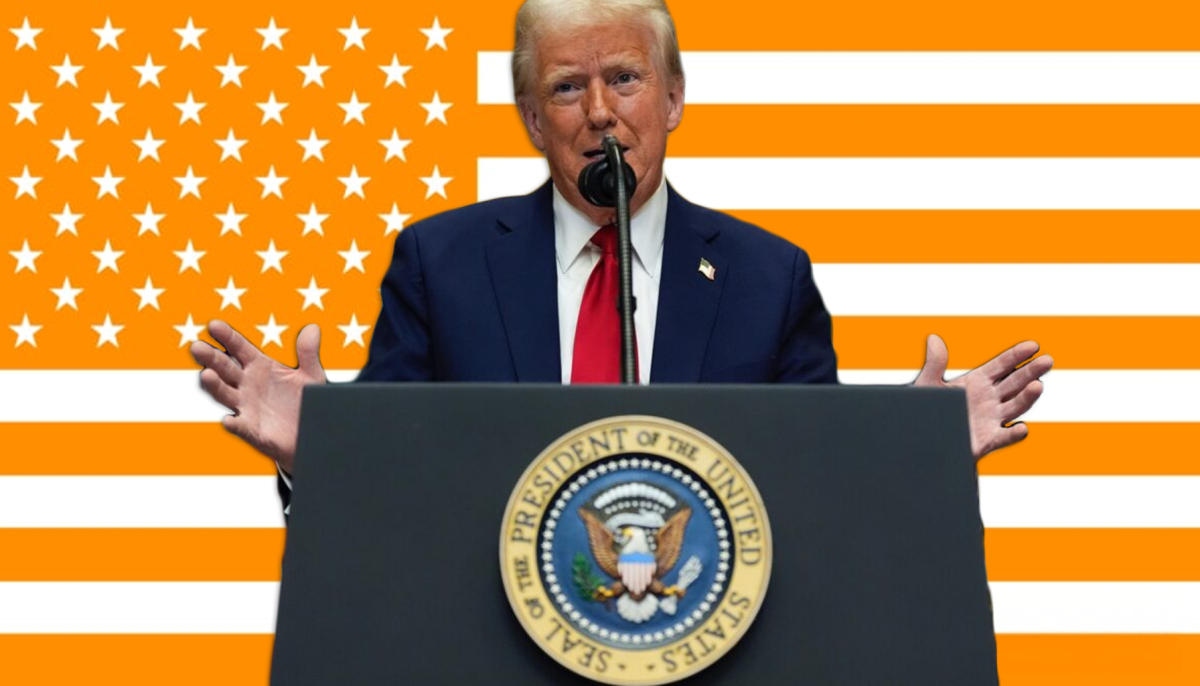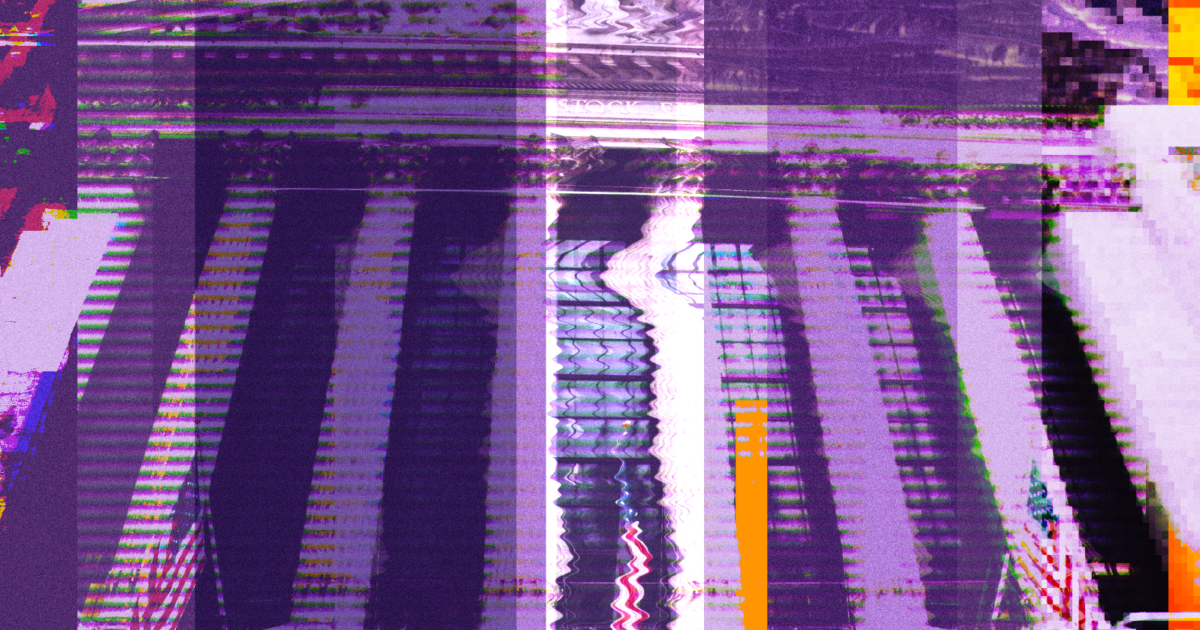A Classic Lesson In Hard Money
A film about a thief and a princess is intertwined with an all-too-familiar inflationary ideology.
*All images in this article are from Hayao Myazaki’s “The Castle Of Cagliostro.”
The lowering of a fiat curtain sealed off all connections to a hard money standard and our global economy has sunk knee-deep into a bog of fiscal uncertainty, mooched by money-sucking mosquitos à la fractional reserve banking, whipped by the winds of politically fueled monetary policies, and a populace’s perspective clouded by the indoctrination into an inflationary ideology. Unsound monies are defenseless against the gaming of its production and purchasing power, making the utilization of an unsound money prone to the personal goals of megalomaniacs. The antagonist in “The Castle of Cagliostro” enslaves the world’s economy through the flaws of fiat as an unsound money.
“… these monetary institutions have not come into existence out of any economic necessity. They have been created because they allow an alliance of politicians and bankers to enrich themselves at the expense of all other strata of society.” — Hülsmann Jörg Guido (“The Ethics of Money Production”, p. 239)
Bitcoin provides an exceptional alternative to the insurmountably and disgustingly corrupt fiat system. A system that is free from self-motivated and centralized entities enables greater individual future certainty than any monetary policy tweaking could hope to accomplish. While FUDers have yet to connect the dots between bitcoin and individual sovereignty, these same people are largely cognizant of the widespread politician pocket-lining innate to traditional monetary institutions. These people will initially blame voters who brought the corrupt politicians to power, but regardless of who voted them into office this isn’t why politicians are synonymous with corruption. Then, these people look to blame the greedy bankers encouraged by capitalism and the free market who are lobbying for self-interested goals, yet this still isn’t the reason as to why politicians are susceptible to corruption regardless if they are pro-capitalist and lobbied by big banks.
Finally, these people resort to blaming the other side of the political spectrum for being rife with corruption and selfishly motivated, yet this still does not pinpoint the exact reason for why politicians of all political spectrums can be corrupted. FUDers prefer to point fingers but fail to realize the smokescreen that politicians and bankers employ to distract them from the source of corruption.
There exists a disconnect until one realizes that bitcoin exists not as a speculative asset, but rather as an immune system guarding the freedom of individual wealth against the virus which enables corruption — that is, the ability to create money and dictate its distribution at the lift of a gluttonous finger.
Relinquishing the production of money in a decentralized manner discourages dishonest public servants specifically seeking positions that fulfill their aspirations for wealth and fortune instead of prioritizing public good. Without a means for politicians and bankers to enrich themselves — through the technique of indirectly taxing citizens via inflation — the role of policy-making can be separated and free of influence from the inevitable temptation to conjure up more money to carelessly continue bribery and corruption. Even the most stringent, respected leaders can lose their moral bearings and become persuaded to corrupt or, due to the fickle nature of tweaking monetary policies, be required to confront fiscal complexities with enormous pressures and little time to react; thereby emphasizing the necessity to remove centralized control over money production and de-politicize the distribution of money. Perhaps unwittingly, Hayao Miyazaki taught us this valuable lesson and to appreciate the benefits of an immutably hard money over four decades ago.
The classic 1979 feature-length anime film, “The Castle of Cagliostro,” is an endearing and captivating tale centered around a sly, charming thief’s unquenchable thirst for the next big heist. I thoroughly recommend watching the film in its entirety for full plot context as this quasi-analysis will be focused on story components regarding the flaws of fiat. The movie’s introduction sets the scene with our mastermind thief, “the Wolf,”3 and his trusted colleague, Jigen, sprinting out of the front doors of a glitzy casino, hugging bags full of money and paper bills falling out from the getaway car. They escape the casino’s security personnel without breaking a sweat, but Wolf quickly realizes the money they stole was all counterfeit!
Yet the counterfeit money was legitimate enough to fool the national casino where Wolf and Jigen stole the money straight out of the vault. That would mean whoever created these counterfeit dollars holds the keys to a fountain of wealth — the printing presses that create limitless riches and power. At this point, depending on the viewer’s dosage of orange pill, we can already foresee the dangers of a printing press producing convincingly counterfeit money.
If a malicious entity can create counterfeit money good enough to be circulated in a government-owned and operated facility,4 then there is no theoretical end to the exploitation that this entity could inflict. There is an obvious reason why counterfeiting money is illegal and that is because money becomes effectively worthless when its supply is severely diluted with quality fake money that can’t be detected by the government itself.

On a thief’s hunch — plus elements that would spoil the movie — Wolf and Jigen journey to the Castle of Cagliostro where Wolf suspects the printing presses are located. For additional context and to not delve too deep into the movie’s details, the primary plot involves Wolf, our protagonist, saving a princess in distress, Clarisse, who is about to be forcefully married to our dastardly evil and wickedly abhorrent antagonist, Count Cagliostro, the country’s regent and an enormously influential world leader. Hot on Wolf’s trail is his longtime pursuer, Inspector Zenegata of Interpol, whose character acts as the moral compass in an otherwise centrally corrupt justice system.

Aside from some over-the-top, cartoonish amounts of security measures Count Cagliostro’s castle provides — like auto-aiming lasers — and keeping the printing presses out of plain sight, the Count is able to amass limitless wealth right under the nose of Interpol because paper money is easily forgeable relative to an immutably hard money like bitcoin. Beyond the forgeable aspect of paper money, there is no publicly auditable ledger for a money-producing jurisdiction or an international watchdog to track the circulation of unmarked bills, making fiat far more appetizing for criminals to adopt than bitcoin.
Who will know if the Count prints unmarked bills in order to economically crush a political foe through dilution of their money supply? This fictional scenario is strikingly similar to the trade beads that were exchanged as money in African nations between the 16th and 20th century, where the advanced production of beads using methods employed by European artisans enabled exploitation in the manner of a speculative attack on this African monetary system — effectively crippling its role as a money and subjecting these nations to perpetual poverty.
Accordingly, there exists the persistent need to crush opposing political dissidents from exposing the Count’s operation. During the story’s rising action scene, the Count captures Wolf and imprisons him in the castle dungeons where corpses of political opponents have accumulated across 400-some-odd years of the Cagliostro rule. As for Inspector Zenegata, who initially came to the castle to arrest Wolf, he gets a little too nosy in the Count’s personal affairs and similarly finds himself in the castle dungeons. Expressing suspicion against the Count, or so much as potentially representing a threat in dismantling the Count’s operation, results in one’s immediate confinement to the castle dungeons. There are similarities to the Count’s tight control over his counterfeiting scheme and the U.S.’s tight control over the monopolization of money production. Much like the U.S., the Cagliostro family is renowned as too powerful to touch, even by Interpol, further cementing their imperviousness to the laws that only apply to the peons.

While navigating the maze of sewers comprising the castle dungeons, Inspector Zenegata runs into Wolf and thinks he finally caught the world’s greatest criminal … but disappointment settles in as he realizes they are both equally lost in a dungeon and thus can’t formally arrest anyone. To find their way out, the two enemies agree to a truce and Wolf reveals to Inspector
Zenegata that there is a secret treasure in the Cagliostro Castle. That secret treasure, Zenegata soon finds out, are the printing presses operated by Count Cagliostro. Upon finding the printing press room, packed with rows of machinery and stacked crates of freshly printed bills, Zenegata exclaims it is the largest operation and best counterfeit he has ever seen. Wolf remarks that they are the best machines money can buy — a testament to the resources and power the Count is able to garner through exploiting unsound money. In exploring the printing press room, Inspector Zenegata and Wolf discover counterfeit monies of Japanese yen, German Deutsche marks, Swiss francs, U.S. dollars, Russian rubles … even Italian lira. Fake money from every country in the world. Inspector Zenegata responds appropriately upon discovering this egregious crime:
“The world is at his mercy!”

Wolf, apparently already orange pilled and aware of the ramifications that an unsound monetary system enables, comments:
“This is how the Cagliostro family has been able to build a secret international empire, the principality has been running on phony money for centuries! The counterfeiting scheme weakened all his enemies. Seemingly insignificant, Cagliostro ruined the Bourbon dynasty. They caused the 1929 Depression, they’ve secretly controlled global economics for centuries. This is the source of Cagliostro’s fabled wealth. An international counterfeiting ring that has ruled the world’s economy through conspiracies and assassinations. We’ve gotta stop ‘em!”5
The movie depicts a montage of economic recessions, wars, political squabbling and rioting. Wolf’s comment resonates beyond the film’s fictional setting and lands more in the realm of reality. The economic terrorism capable by affluential families and figureheads has indeed resulted in secret international empires beyond the reach of laws and regulations. To name a few: the Rothschilds, the House of Saud and the Koch family. Although these entities can’t print their own money (as far as we know), they certainly can lobby and buddy-up with those who manage the printing presses. The tool that these affluent entities use, unsound money, permits these vectors of economic attack and ensures their oligarchy remains unfettered. The Count weaponized this tool to his advantage because the only gatekeeping to power is the price tag to buy a politician. With endless monetary resources at his fingertips, the Count can form strong alliances within Interpol through bribing or, if necessary, blackmailing that guarantees his counterfeiting operation continues without interruption.
Subsequently, malicious entities like the Count have no incentive to use their influence responsibly and herein lies the fault with conflating trust in human goodwill and the production of money. This is the weakest link and primary point of failure in a fiat monetary system that, when the Count feels like it, can devastate whole economies. The ability to choreograph the value of a single unit of money is a monumental role to manage that always attracts the most power-hungry individuals. Humans are self-serving, self-interested creatures at heart. Therefore, it would follow that money production should be separated from humans or else the production of money becomes fundamentally unethical and a conflict of interest. It comes as no surprise that naturally flawed humans continue to support a flawed, unsound money to benefit their personal objectives.
Furthermore, Wolf adds that Count Cagliostro can’t be arrested because, sure enough, counterfeiting money isn’t illegal in Cagliostro’s country. Since they can’t confront Cagliostro legally, they formulate a plan yet to be revealed to the viewer and together they look to bring justice against the Count’s crimes. To avoid further details and spoiling the film entirely, the reader just needs to know that they flee the castle and Wolf slips away from the Inspector. Inspector Zenegata managed to smuggle out some evidence in the form of printing plates and counterfeit notes. Consequently, since Zenegata cooperated with the infamous thief to escape instead of arresting him, Interpol orders the Inspector to return home after “harassing” poor old Count Cagliostro.
Of course, Wolf was the only witness who could have testified to the counterfeiting operation and Zenegata’s lack of compelling evidence could not convince the members of Interpol to interfere due to the power Cagliostro held over them. One member agreed these were the best counterfeits he’d ever seen, another member whispers it would be a waste of time pursuing legal action against Cagliostro. Zenegata, understandably frustrated with Interpol’s lack of interest in convicting the Count, asks the room what they are afraid of or if Cagliostro controls them all — which they all, of course, deny. Instead, Interpol defends their position and says they cannot meddle in the internal affairs of a sovereign nation such as Cagliostro. Zenegata, now fully orange pilled, implores the members of Interpol to realize the catastrophic power that a central entity can have when in control of a money supply. Zenegata rightly argues that this is no political matter — it’s criminal! Yet he is again met with doubt and skepticism. Russia’s Interpol delegate concludes that everyone agrees the Count’s reputation is above suspicion and this is likely a conspiracy by the Americans to usurp Count Cagliostro. And just like that, Zenegata’s attempt to convict the Count fails and the discussion takes a tangent as Interpol members devolve into tribalistic finger-pointing. Additionally, the Inspector’s reputation is smeared when the front page news published pictures of him and Wolf slipping out of the castle together.
That’s what you get for going against the Cagliostro family. Without physically pulling these Interpol members out of their chairs, dragging them down to the castle, and taping their eyelids open to see the evidence for themselves, there would be nothing damning enough to convict the Count. Even then, the Count already owns some of these Interpol members and would just buy off those who put up a fight. Eventually, any members of Interpol who still have a grain of grace left in them are vastly outnumbered and the cycle is successfully repeated — Count Cagliostro’s branding is further strengthened as an untouchable force to be reckoned with. The Count continues to rely on weaknesses in unsound money: capability to counterfeit and an infinite supply cap. By removing the Count’s limitless resources, he no longer has the crutch that affords him the luxury to buy influence.
Unfortunately, this is easier said than done. It appears that the only meaningful solution to constrain people like the Count would be adopting a money that has a limited supply cap and a virtual impossibility to forge, but regrettably bitcoin does not exist in this film’s timeline. So instead of ushering in a new monetary era free from the tyrannical reigns of a centralized, malicious entity, our dynamic duo gets crafty in capturing the Count.

Nearing the film’s climactic face-off between the hero and the villain, Wolf sneaks back into the castle and disrupts the Count’s vows to save the princess from her forced marriage. Inspector Zenegata, attending the wedding under the guise of trying to nab Wolf once again, sees his opportunity amid the wedding chaos and directs a nearby TV crew to follow him as he arrests “he Wolf” … but Zenegata actually steers the TV crew down to the cellars of the castle where the printing presses are hiding! Perhaps my favorite moment of the film is where Zenegata acts as though he took a wrong turn and discovered the world’s biggest crime syndicate. Humorously, the scene transitions to show the Interpol members watching the wedding’s live broadcast and are experiencing Zenegata’s point of view as he barrels down the stairs toward the printing presses. If Interpol is watching the broadcast, then the whole world is also watching it and will be witnesses to the counterfeiting ring Cagliostro operates. Zenegata busts into the room and, with an attempted look of shock, states:
“What do ya know? Printing presses! What could they be printing, I wonder? Hmm, let’s take a look.” [Inspector Zenegata picks up a fresh sheet of printed bills and presents it to the camera] “What’s this? It’s money! Counterfeit! Well, what do ya think about that? What a break! I found this purely by accident! My investigation with the Count was closed and I was after the Wolf! Can you believe it?”6
The scene then returns to the Interpol members circled around the TV where one of them face-palms with resignation: “We’ll never be able to cover this up,” he says. An admittance that, not only did Interpol want to avoid pursuing the Count, but that they also wanted to drink from the fountain of wealth provided by Cagliostro’s counterfeiting ring. Politicians so corrupt that it required cold, hard evidence to be publically broadcast, live, to millions of viewers. The movie concludes with the collapse of the Cagliostro empire.
There are clear drawbacks associated with centralized money, à la fiat and other unsound monies, that are fundamental to understanding Bitcoin’s accomplishments. Bitcoin provides a publicly auditable ledger that allows for anyone of any economic background to verify the security of the network and the integrity of the coin. This means that bitcoin can’t be counterfeited; the apolitical code won’t let you and that very code lives inside a decentralized force field making its manipulation virtually impossible. Satoshi understood that humans are innately selfish, so Bitcoin is programmed to exploit this human trait to its advantage. Participants in the Bitcoin network naturally want to maintain their individual sovereignty and will selfishly protect the network from malicious actors — which has the indirect effect of securing the network for all participants. Manipulation of the network becomes uneconomical for an attacker as the value proposition of Bitcoin fails if it can be easily attacked. If we can realize the opportunity that an immutably hard, sound money like bitcoin provides for individual sovereignty,7 then we can effectively expel the evils enabled by centralized, unsound monies.
This has been an explorative thought process that is a bit of a break from conventional analysis of nonfictional events in the history of money. Considering the movie’s primary plot follows the relationship between the thief and the princess, the interpretation I’ve put forward is certainly not a perspective explicitly stated by Hayao Miyazaki and thus should not be considered a view that Miyazaki intended to endorse when making this movie. However, I doubt Miyazaki accidentally slipped in a lesson on hard money, since he has always been vocal in trending topics such as economics and politics.8 The Castle of Cagliostro is a masterpiece in storytelling, soundtrack, world building and character creation that also subtly brings to light the corruption brought by a fiat system.

This is a guest post by Sam Cargo. Opinions expressed are entirely their own and do not necessarily reflect those of BTC Inc or Bitcoin Magazine.
References
- Miyazaki, Hayao, director. “Lupin the 3rd: The Castle of Cagliostro.” Toho, 1979. Streamline Pictures, 1992 English dub.
- Sam, “The Bitcoin Brothers Podcast,” www.bitcoinbrothers.io.
- Streamline Pictures, 1992 English dub contains several deviations from the original Japanese script. Due to copyright issues with Maurice LeBlanc’s estate, the creator of the fictional gentleman thief and detective Arsène Lupin, our thief is referred to as “the Wolf” in this paper.
- “Treasury, Federal Reserve and Secret Service Issue Report on High Use, Low Counterfeiting of U.S. Currency Abroad.” U.S. Department of The Treasury, October 25, 2005, www.treasury.gov/press-center/press-releases/Pages/hp154.aspx.
- There are a few translations from Japanese into English. For this paper, we refer to the English dub by Streamline Pictures, 1992. In other translations, Goat Money or goat-bills is used to refer to fake or phantom money counterfeited by the Cagliostro family.
- “The First Miyazaki Movie: The Castle of Cagliostro.” YouTube, STEVEM, February 8, 2021, youtu.be/fujZjgigZpg?t=1096.
- Davidson, J. D., and W. Rees-Mogg. 1999. “The Sovereign Individual: Mastering the Transition to the Information Age.” Touchstone.
- “Hayao Miyazaki on Trump, Japan’s Military Role and Your Name.” YouTube, Koganei, April 26, 2017, www.youtube.com/watch?v=sMQVYdfqKUU.









